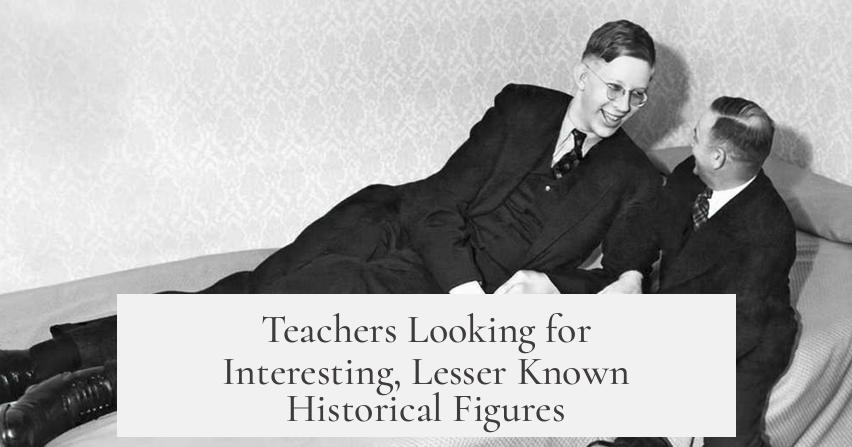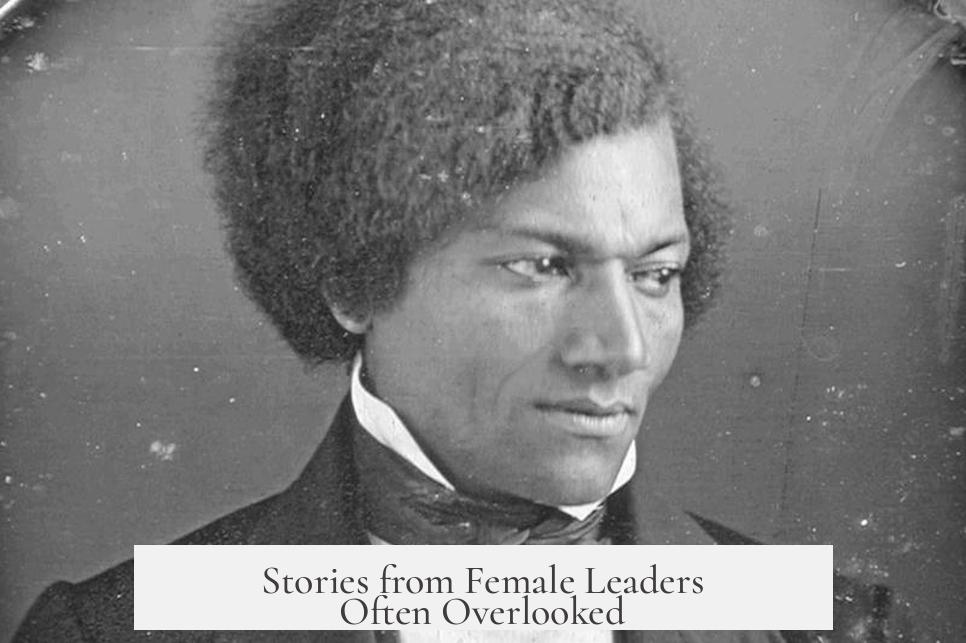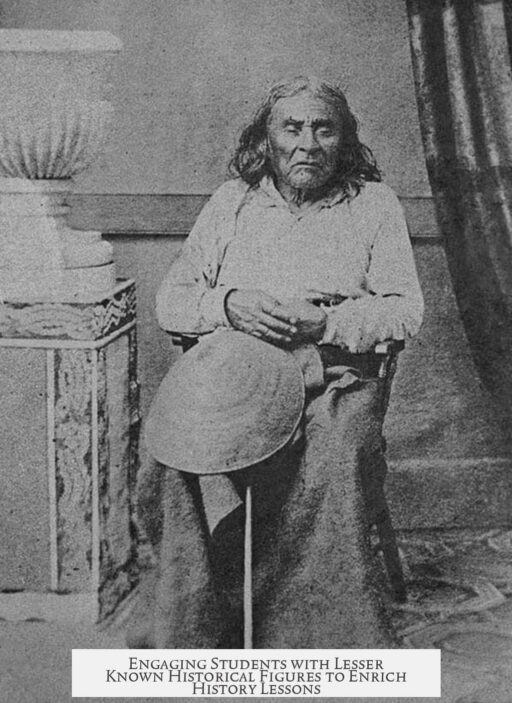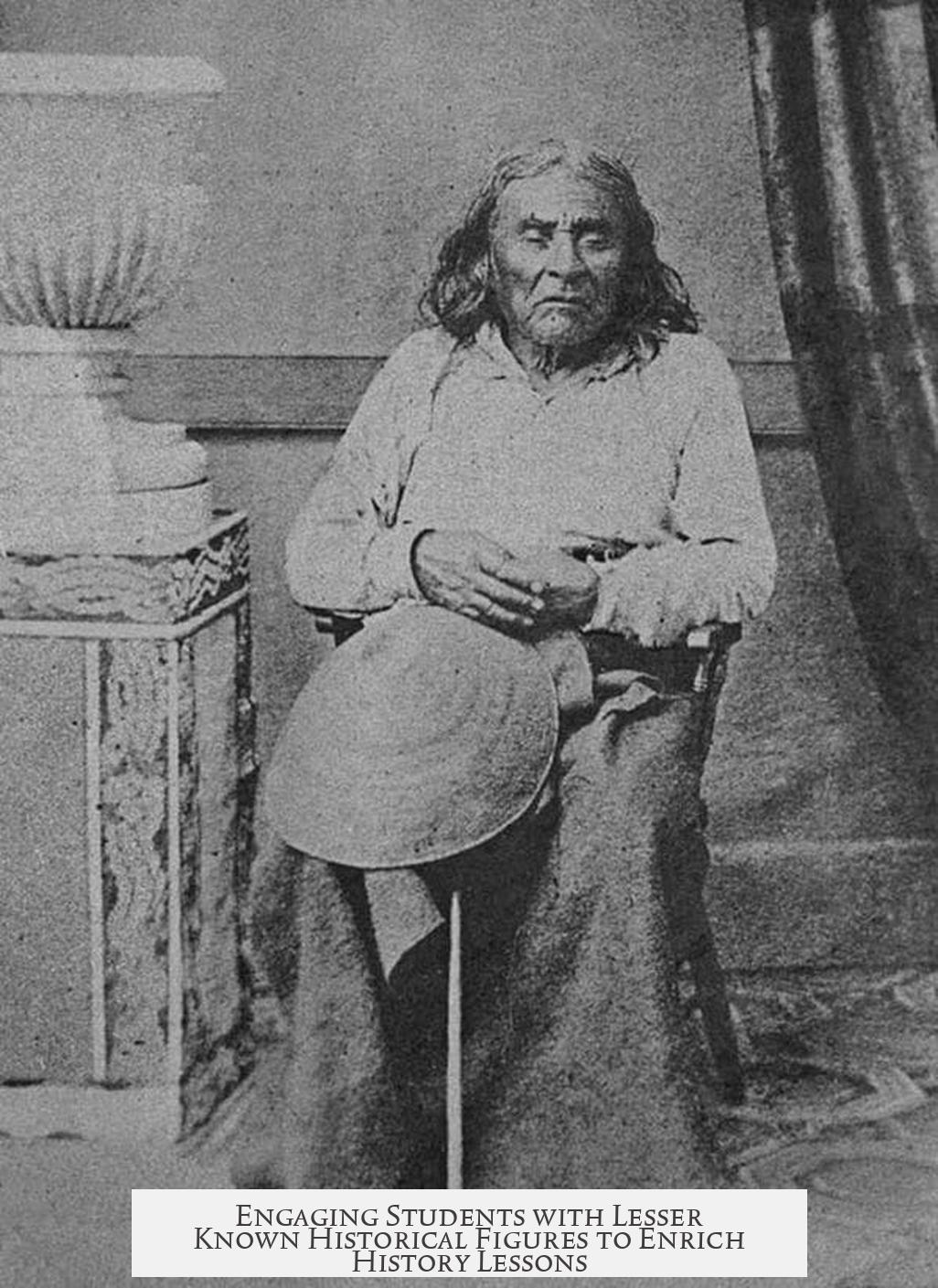Teachers looking for interesting, lesser-known historical figures will find a wide array of personalities from diverse eras and regions that provide fresh, engaging perspectives beyond the common textbook narratives. Many of these figures offer rich stories and impactful legacies suitable for enhancing classroom discussions in history, social studies, and cultural studies. Including these names can spark curiosity and critical thinking among students.
Here is a selection of lesser-known figures across various cultures and time periods, along with their significant contributions or unique historical roles:
- Belisarius: General under Byzantine Emperor Justinian I, he was instrumental in reclaiming much of the former Western Roman Empire territory.
- Florence Nightingale: Known as the founder of modern nursing, she revolutionized hospital sanitation and pioneered statistical methods for healthcare improvements.
- Queen Boudica: Celtic queen who led a major uprising against Roman rule in Britannia around 60-61 AD.
- King Edward VI: Son of Henry VIII and briefly King of England; often overlooked but important in Tudor succession.
- Captain James Cook: 18th-century explorer who mapped large parts of the Pacific, including New Zealand and eastern Australia.
- Alan Turing: Mathematician whose code-breaking significantly contributed to the Allied victory in WWII and laid foundations for computing.
- Eleanor of Aquitaine: Influential queen consort and leader during the Second Crusade; held power in both France and England.
- Clovis I: First king to unite the Frankish tribes, setting the stage for modern France’s origins.
- Charles-Henri Sanson: Parisian executioner who implemented the guillotine and executed King Louis XVI during the French Revolution.
- Louis Bonaparte: Napoleon’s younger brother, briefly ruler of Holland, noted for his popularity despite Napoleon’s military politics.
- Chevalier d’Éon: French diplomat and spy who lived and presented openly as both a man and a woman in the 18th century.
- Tsar Alexander II: Known as “the Liberator,” he emancipated Russian serfs and pursued reforms similar in spirit to Abraham Lincoln’s during the 19th century.
- Olga of Kiev: First recorded female ruler of Russia, notable for her political acumen in the 10th century.
- El Cid: Medieval Spanish knight and national hero who played a pivotal role in the Reconquista.
- Karl Friedrich Benz: Pioneer of the gasoline-powered automobile, shaping modern transportation.
- Oda Nobunaga: Japanese warlord who began unifying feudal Japan in the 16th century.
- Murasaki Shikibu: Japanese Heian-era noblewoman and writer of “The Tale of Genji,” the world’s first novel.
- Sejong the Great: Korean monarch who promoted scientific, technological, and economic advancements.
- Hatshepsut: Female Pharaoh of Egypt who expanded trade networks and commissioned monumental architecture.
- Cyrus the Great: Founder of the Persian Empire, noted for his tolerant and efficient governance methods.
- Herodotus: The “Father of History,” whose travel and chronicling aided the development of historical recording methods.
- Malik Ambar: African-born leader who rose to power in India, defending the Deccan region against Mughal expansion.
- Benito Juarez: Mexico’s first indigenous president, championing liberal reforms and national sovereignty.
- Doña Marina (Malintzin): Indigenous Mexican interpreter and diplomat, complicated historical figure in the Spanish conquest contexts.
- Yaa Asantewaa: Queen mother and warrior who led the Ashanti revolt against British colonialism in Ghana.
- Toussaint L’Ouverture: Leader of the Haitian Revolution and key figure in the abolition of slavery there.
- Marie Marvingt: French aviation pioneer and war nurse, innovator in medical aviation and winter sports.
- Shirley Chisholm: First African American woman elected to U.S. Congress and early presidential candidate.
- Ching Shih: Noted Chinese pirate queen commanding a massive fleet in the 19th century.
- Rosa Luxemburg and Karl Liebknecht: Activists in post-WWI Germany, their story reveals complexities of socialism and political violence.
Teachers can leverage these figures to broaden students’ understanding of global history. Each person connects to important themes such as leadership, innovation, resistance, and cultural exchanges across continents and centuries.
Resources that provide further details include:
- Negra Bohemian’s list of Black historical figures
- George Takei’s collection of little-known impactful people
These sources offer curated insights into marginalized or underrepresented personalities, enriching history curricula with diverse worldviews.
Key takeaways for teachers seeking intriguing lesser-known historical figures:
- Select figures from diverse cultures and time periods for a broad historical perspective.
- Highlight individuals whose stories challenge conventional narratives or reveal overlooked contributions.
- Use figures connected to major historical themes like exploration, innovation, resistance, and governance.
- Incorporate reliable online resources to expand research and teaching materials.
- Engage students by connecting historical figures to contemporary issues or relatable struggles.
Teachers Looking for Interesting, Lesser Known Historical Figures

Are you tired of the same old history lessons, where the same dusty kings, queens, and generals parade across your classroom every year? If you’re a teacher looking to inject fresh energy into your lessons, exploring lesser known historical figures is the perfect way to captivate your students. Why settle for the usual suspects when history is bursting with fascinating characters you probably never heard of in school? Let’s ditch the cookie-cutter curriculum and dive into some intriguing, underappreciated figures from around the world who can spark curiosity and deeper learning.
Let’s start with the premise: many history classes in the US (and elsewhere) often stick to outdated textbooks or focus heavily on famous names. However, closer investigation reveals a treasure trove of fascinating people whose stories deserve the spotlight. Some of these individuals might even be touched upon nowadays, but often only peripherally. They offer rich, fresh perspectives that can challenge students’ understanding of history and make learning deeply engaging.
Why Introduce Lesser Known Historical Figures?
Giving your students a broader picture of history helps develop critical thinking and empathy. Explore stories beyond the usual narratives. It breaks monotony, and the mystery surrounding these characters encourages research and inquiry-based learning. Plus, it makes history feel more like an unfolding story rather than a boring list of dates and names.
Want proof that this works? Take the example of Florence Nightingale, often known as the mother of modern nursing. While her name rings a bell, many students don’t know she was also a pioneer in using statistics to improve hospital conditions and healthcare management—two fields still highly relevant today. This kind of detail transforms Nightingale from a distant figure into a role model demonstrating how ideas and science improve lives.
Some Hidden Gems to Spark Your Students’ Interest
Here’s a curated list of some fascinating figures, spanning continents and centuries, that can boost your history lessons and surprise even well-read students.
- Belisarius: Justinian’s trusted general, whose military strategies helped reclaim Roman territories. His story blends loyalty, brilliance, and fall from grace, perfect for discussing empire and power.
- Queen Boudica: The fierce Celtic queen who led a massive revolt against Roman occupation in Britain around 60-61 AD. She embodies resistance and leadership, an excellent story for discussions about colonization and indigenous resistance.
- Alan Turing: Beyond cracking German WWII codes, Turing laid the foundations for computer science, profoundly shaping the modern world. His life story also touches on injustice faced due to his sexuality, offering multidimensional lessons.
- Chevalier d’Éon: A diplomat and spy who lived as both a man and a woman. Their story can inspire lessons on gender, espionage, and 18th-century European politics.
- Khublai Khan: Grandson of Genghis Khan, uniting China’s territories under non-Han rule and initiating a golden age. He challenges Eurocentric history perspectives.
- Marie Marvingt: A French daredevil who was the first flight nurse, invented the airplane ambulance, and was a pioneer female pilot. Her diverse contributions to medicine, adventure, and sports break stereotypes.
- Rosa Luxemburg and Karl Liebknecht: Anti-war activists during WWI who fought for socialism in Germany. Their lives introduce political complexity and the roots of instability leading to WWII.
- Ludwig II of Bavaria: An eccentric monarch who built extravagant castles in the Alps, inspiring Disney’s fairy tale castles. His life raises discussions on mental health, patronage of the arts, and personal freedom.
- Ching Shih: A commanding Chinese pirate queen who commanded over 1,500 ships and 70,000 men, defying traditional gender roles and dominating the South China Sea.
- Malik Ambar: An African slave who rose to power in India as a military leader resisting the Mughal Empire. His story weaves themes of resilience, cultural intersection, and leadership.
Global Tales that Teach More Than Just Dates
Many of these figures provide excellent opportunities to integrate social themes and cross-curricular connections. How about Eleanor of Aquitaine, who was queen consort of both France and England before becoming a powerful duchess herself? Her life is bursting with stories of medieval politics, crusades, and female power in a patriarchal world.
There’s also Cao Cao, one of ancient China’s most brilliant commanders, whose strategic genius still features in Chinese literature and media. Students can compare his leadership style with European warlords like Hannibal Barca, the Carthaginian general famous for his daring crossing of the Alps.
For a refreshing look at technology’s roots, Karl Friedrich Benz offers the story of how gasoline-powered cars came to life. His accomplishments highlight the thrilling transition from horse-drawn carriages to modern vehicles.
Stories from Female Leaders Often Overlooked

History often sidelines women, but many lesser known figures from diverse regions had profound impact.
- Hatshepsut: One of the few female Pharaohs of ancient Egypt who expanded trade and led military campaigns. Despite her achievements, much of her legacy was deliberately erased by her successor.
- Olga of Kiev: The first recorded female ruler in Russia, a powerful figure during the 10th century whose rule helped shape early Eastern European politics.
- Yu Gwan Sun: A youthful Korean independence activist against Japanese occupation, representing courage and patriotism.
- Murasaki Shikibu: Writer of the world’s earliest novel, “The Tale of Genji,” showcasing literary innovation and court life in Heian Japan.
Including such figures broadens understanding and injects fresh human stories into historical eras often viewed as monolithic.
Using Unique Historical Figures for Classroom Engagement
So, how can you bring these characters into your lesson plans? Here’s some practical tips:
- Role-Playing and Debates: Assign students roles of these historical figures. Debates around their choices or impact encourage active learning.
- Comparative Essays: Compare and contrast lesser known leaders like King Edward VI with more familiar monarchs, or the leadership styles of European emperors vs. Asian warlords.
- Research Projects: Encourage students to explore new figures and present on their cultural context and significance. Use online resources such as Negra Bohemian or George Takei’s list to find even more inspiration.
- Multimedia Projects: Use videos, podcasts, or creative skits about figures like Frederic Bartholdi who designed the Statue of Liberty or Gabriele D’Annunzio, whose colorful yet controversial life reads like a spy novel.
Learning from Complexity, Not Just Names
Introducing these lesser known figures helps students see history as a tapestry of complex personalities, not just dates and dry facts. Their lives show how history isn’t black and white but filled with ambiguity, conflict, innovation, and surprise. For example, take Charles-Henri Sanson—the French executioner who helped invent the guillotine to make executions quicker and less painful, only to regret creating an instrument that fed public spectacle. It’s a lesson about unintended consequences and human psychology.
Or think about Herostratus, who committed arson to gain fame by destroying the Temple of Artemis, one of the wonders of the ancient world. This serves as a powerful conversation starter about fame, legacy, and the ethics of history’s record-keeping.
From Forgotten to Famous: The Impact of Teaching These Figures
When teachers spotlight such figures, students gain a nuanced understanding and appreciation for history’s full spectrum. They recognize culture’s diversity, the impact of individuals from various backgrounds, and the twists that shaped our modern world. Additionally, stories like Shirley Chisholm, the first black woman elected to the US Congress and 1972 presidential candidate, inspire young learners to consider civic engagement and political courage.
Teachers who use these examples report more lively discussions and more questions from students. The “boring history” stereotype melts away, replaced by curiosity and skepticism that make students critical thinkers.
Wrapping It Up: A Call to History Teachers
If you’re a teacher eager to shake up your curriculum, diving into lesser known historical figures offers a goldmine of stories. Not only do these figures broaden the traditional narrative, but their varied cultural backgrounds, struggles, and triumphs create a rich educational experience. It’s like giving your students a secret map to the hidden treasures of history.
So, why stick to the usual gang when you can introduce Ching Shih, the pirate queen who ruled thousands of men? Or Menelik II, the Ethiopian emperor who defied European imperialism? The possibilities are endless!
History is more than kings and battles. It’s about people—unique, complicated, brave, flawed. Start exploring these lesser known historical figures, and watch your students’ eyes light up with wonder.




